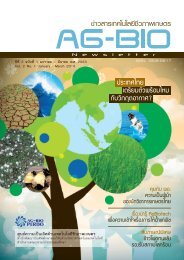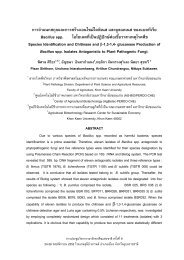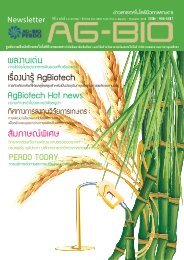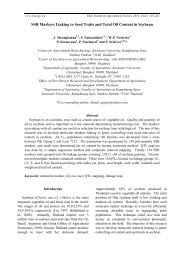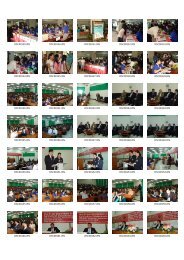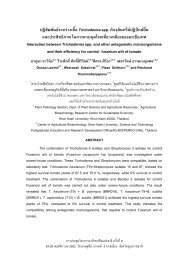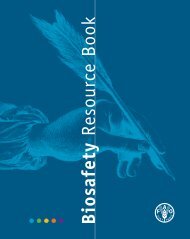Biosafety Manual PDF - Lawrence Berkeley National Laboratory
Biosafety Manual PDF - Lawrence Berkeley National Laboratory
Biosafety Manual PDF - Lawrence Berkeley National Laboratory
You also want an ePaper? Increase the reach of your titles
YUMPU automatically turns print PDFs into web optimized ePapers that Google loves.
<strong>Biosafety</strong> <strong>Manual</strong><br />
IBC-approved version (May 18, 2010)<br />
Disease<br />
Reservoir<br />
Vectors<br />
Causative<br />
Agent<br />
Exposure Routes<br />
Inhalation Ingestion Skin Contact<br />
tetanus<br />
animals<br />
Clostridium<br />
tetani<br />
— —<br />
wounds<br />
contaminated with<br />
dirt or objects<br />
containing animal or<br />
human feces or<br />
saliva<br />
various<br />
diseases<br />
such as<br />
skin<br />
infections<br />
or gastroenteritis<br />
fish aquarium<br />
water<br />
Mycobacterium<br />
marinum,<br />
M. fortuitum,<br />
Aeromonas<br />
hydrophila, other<br />
bacteria, and<br />
Cryptosporidium<br />
spp. protozoa<br />
— —<br />
skin contact with<br />
aquarium water,<br />
especially if skin has<br />
cuts or abrasions<br />
3.4 <strong>Laboratory</strong> Procedure Hazards<br />
The BMBL five-step approach to assessing biological risk and selecting controls for laboratory<br />
work was initially presented in Section 3.2 of this manual. Step 2 (identifying laboratory<br />
procedure hazards) of this approach is discussed in this section.<br />
Historical data on laboratory acquired infections (LAIs) are an indicator of laboratory procedure<br />
hazards that have resulted in disease. Historical data show that past LAIs have occurred from:<br />
• parenteral inoculation by a contaminated sharp or syringe needle,<br />
• spills or splashes of contaminated materials directly onto the skin and mucous<br />
membranes,<br />
• ingestion through mouth pipetting,<br />
• animal bites and scratches, and<br />
• inhalation of infectious aerosol.<br />
See Section II of BMBL for more information regarding LAIs. Prevention of LAIs depends on the<br />
conscientious and proficient use of standard microbiological practices and special practices (see<br />
Section 4.1 of this manual) and the correct use of laboratory equipment. Table 7 below lists<br />
examples of hazards that may be found in laboratories using biological materials.<br />
Printed copies are not official versions of this manual. Before using the printed copy, verify that it is the most current version.<br />
28



